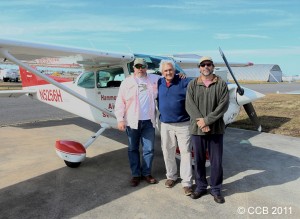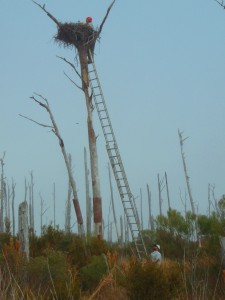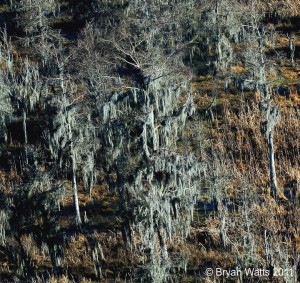CCB Completes Gulf Oil Spill Work with Eagles and Osprey
Azalea at Lake Smith Jan 6
January 6, 2012NBG Eagle Pair First Observed Mating Jan 9
January 9, 2012
January 2, 2012

Eagle flight crew in Louisiana including (l-r) Bart Paxton, Charlie Hammond, and Bryan Watts. Photo by the Center for Conservation Biology.
The Deepwater Horizon oil spill began on April 20, 2010 and ultimately became the largest in U.S. history. The spill was in a location that could potentially impact millions of birds including a large portion of all North American species. In the months following the onset of the spill and at the request of the U.S. Fish and Wildlife Service, Dr. Watts led a national team of raptor biologists to develop a plan to investigate potential impacts to raptors. The ultimate plan included population assessments of bald eagles and osprey. Over the past year, a CCB team including Bryan Watts, Libby Mojica, Bart Paxton, and Fletcher Smith surveyed and monitored several hundred eagle nests from Florida through Louisiana and more than 150 osprey nests primarily in Florida and Mississippi. Final reports on these investigations were submitted to the U.S. Fish and Wildlife Service in December 2011. Findings are confidential pending potential legal cases against British Petroleum.

Libby Mojica and Fletcher Smith sampling an Osprey nest for evidence of oil on the barrier islands of Mississippi. Photo by the Center for Conservation Biology

Eagle nest tree in Louisiana Cypress Swamp. Photo by Bryan Watts.



